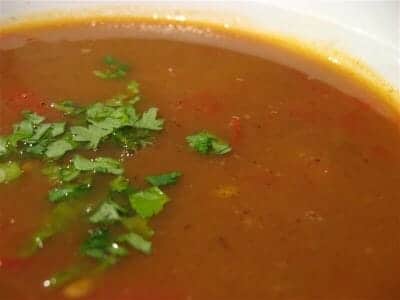Most of you might have heard about the South Indian curries and sambhar but only a few of you understand the concept of rasam. Rasam is actually a lighter version of curry which usually does not contain any heavy cereal or daal in it. It is light, full of aromatic spices and great to taste.
Rasam is usually served as a substitute to curry or sambhar or if you are eating rice for the second time in a meal. It can also be directly consumed as an appetizer since it is mixed with herbs and spices which give it an appetizing quality. Normally, vegetables are used in the rasam recipes but you can also make the rasam with fruits like watermelon, papaya, pomegranate, etc.
The rasam made from fruits are usually cooked on special occasions and festivals whereas the ones made from veggies are frequently cooked for meals in a regular South Indian household. The uniqueness of these rasam recipes lies in the spices and herbs used in them. Mostly, they taste a little sweet and tangy, unlike curries which have a sharp spicy taste.
Rasam can be directly consumed or you can have it with rice, pulav and other varieties of rice. However, you cannot have it with rotis, parathas or naans since they are thin and lack texture. Apple Rasam, Pineapple rasam, tomato rasam, etc. are some of the most popular rasams which smell aromatic and taste delicious.
Rasams are easy to digest and are full of essential nutrients like minerals and vitamins. They fortify your immune system as well since they consist of the spices which are full of anti-oxidants. Therefore, you can include them in your daily diet and enjoy their health benefits along with their surreal taste!

